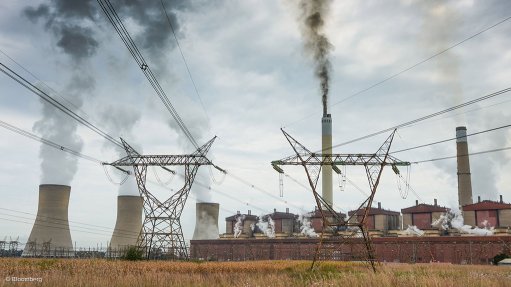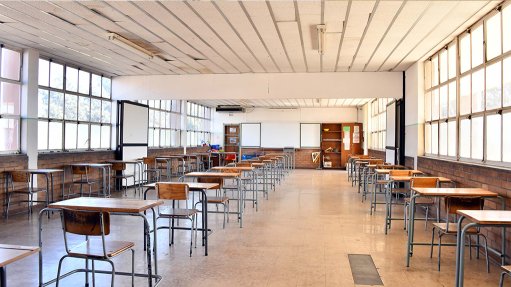South Africa’s power system
There are a few people who the media will call up to give an opinion on the South African power system. These persons are always referred to as energy experts, as in “according to energy expert Jonny Breakertrip” or whoever.
In a way, this is unfortunate, since, of those persons quoted by the media, some are not at all qualified, some are not qualified to give an opinion about the South African power system, and some are quite well qualified. I know that at this moment somebody is drawing a deep breath and saying: “Hey, Machoy, what do you really know, buddy?”
Well, for a period I was senior operations engineer for Eskom Eastern Cape, which meant that, if I gave the instruction, I could get a large city disconnected from the interconnected power system (which, in fact, happened in 1988). Yes, I am a consulting acoustic engineer now. But this wasn’t always the case. So wah.
I thought I would write a sort of primer: the South African power system. I do know that all those who are really experts are sharpening their red pencils. Sharpen away, mense.
I’ll begin with power generation: Much of the power generation is by Eskom coal-fired power stations, a nuclear station (Koeberg, in the Western Cape), various hydropower stations and three pumped-storage schemes. This totals about 45 500 MW. There are seven coastal gas-turbine stations which are fired with diesel fuel. These total 3 449 MW. There are several wind farms, either existing or proposed, with total power of 2 096 MW. There are several solar power stations, totalling 1 094 MW. South Africa imports 1 500 MW from Mozambique. All in all, the total generating capacity is 52 811 MW, of which 43 485 MW is fossil fuel and 9 326 MW renewable, nuclear and imported hydro.
South Africa’s electrical load on August 18 was about 30 000 MW. In theory, there is more than enough power generation reserve to meet this load. There is, but it’s not as good a margin as it seems. Wind and solar (except concentrated solar photovoltaic) don’t work on windless nights and pure hydro must be used sparingly to conserve water. Pumped-storage hydro can be used but about two-thirds of the time it is in pumping mode. The coal stations have about 65% availability, so about 6 000 MW has to come from other resources.
Some hope that coal generation can be replaced. To raise wind power generation capacity from the present 2 096 MW to 11 000 MW, as government proposes, is fundamentally unachievable. There is a myth that South Africa has great wind resources; there is wind on some of the coastal areas (but not north of East London) and no wind of much consequence on the Highveld. It will be possible to build large solar plants, particularly in the North West, and, if salvation is to be had, it lies in these areas. More nuclear power is needed (and has just been approved).
Operating the South African power system poses challenges. South Africa has very long distances between the coal-fired power stations and some major loads (Western Cape, KwaZulu-Natal). Long distances mean long power lines and, if the main transmission lines to the major loads are lost, owing to storms or local disturbance, then the major loads are left without power supply from the major generator centres. In the Western Cape, there will be generation support from Koeberg Nuclear and the gas turbine stations, but there is no contingency after this. There is more than one main transmission line from the major generator centre to the coast, so there are supply alternatives. The proposed nuclear station (which will be on the coast) will do much to firm up the supply to the Western Cape and KwaZulu-Natal.
There are those who hope that one day South Africa will have no coal-fired power stations. This may occur if a different form of energy production becomes possible but, with the current generation systems, very doubtful. South Africa’s power system, there you have it.
Article Enquiry
Email Article
Save Article
Feedback
To advertise email advertising@creamermedia.co.za or click here
Comments
Press Office
Announcements
What's On
Subscribe to improve your user experience...
Option 1 (equivalent of R125 a month):
Receive a weekly copy of Creamer Media's Engineering News & Mining Weekly magazine
(print copy for those in South Africa and e-magazine for those outside of South Africa)
Receive daily email newsletters
Access to full search results
Access archive of magazine back copies
Access to Projects in Progress
Access to ONE Research Report of your choice in PDF format
Option 2 (equivalent of R375 a month):
All benefits from Option 1
PLUS
Access to Creamer Media's Research Channel Africa for ALL Research Reports, in PDF format, on various industrial and mining sectors
including Electricity; Water; Energy Transition; Hydrogen; Roads, Rail and Ports; Coal; Gold; Platinum; Battery Metals; etc.
Already a subscriber?
Forgotten your password?
Receive weekly copy of Creamer Media's Engineering News & Mining Weekly magazine (print copy for those in South Africa and e-magazine for those outside of South Africa)
➕
Recieve daily email newsletters
➕
Access to full search results
➕
Access archive of magazine back copies
➕
Access to Projects in Progress
➕
Access to ONE Research Report of your choice in PDF format
RESEARCH CHANNEL AFRICA
R4500 (equivalent of R375 a month)
SUBSCRIBEAll benefits from Option 1
➕
Access to Creamer Media's Research Channel Africa for ALL Research Reports on various industrial and mining sectors, in PDF format, including on:
Electricity
➕
Water
➕
Energy Transition
➕
Hydrogen
➕
Roads, Rail and Ports
➕
Coal
➕
Gold
➕
Platinum
➕
Battery Metals
➕
etc.
Receive all benefits from Option 1 or Option 2 delivered to numerous people at your company
➕
Multiple User names and Passwords for simultaneous log-ins
➕
Intranet integration access to all in your organisation

















